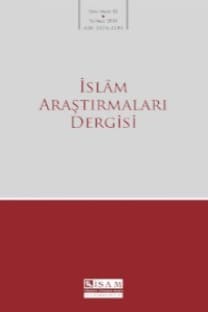Şehristânî’nin “el-Mecûs” Tasnifinin Mecûsî Kutsal Metinlerinden Hareketle Tahkiki
Bu makalede Şehristânî’nin el-Milel ve’n-nihal isimli eserinde “el-Mecûs” başlığı altında yer alan bölümün Sâsânî dönemi Mecûsî yorum geleneği olarak bilinen Pehlevî metinleriyle Zendler bir karşılaştırılması yapılacaktır. Bu noktada Şehristânî’nin Mecûsîlik kapsamında tasnif ettiği grupların temel iddialarına yönelik olarak naklettiği bilgilerin Sâsânî dinî edebiyatında yer alan bilgilerle ne ölçüde örtüştüğü sorusuna cevap aranmaktadır. Bu şekilde Şehristânî özelinde XII. yüzyılda Mecûsîlik hakkında Müslüman yazarların İslâm öncesi İran dinî geleneği hakkında sahip olduğu tasavvura ulaşmak hedeflenmektedir.
Anahtar Kelimeler:
Şehristânî, el-Milel ve’n-nihal, el-Mecûs, Mecûsîlik, Zerdüşt, Keyûmers, Zürvân, Avesta, Pehlevî metinleri/Zend.
A Verification of Shahristānī’s Account of “al-Majūs” in the Light of Zoroastrian Texts
This article aims to compare Shahristānī’s account of “al-Majūs” in his al-Milal wa al-nihal with the Pahlavi texts Zend from the Sasanian period, which correspond with the commentary tradition of Zoroastrianism. In this way, Shahristānī’s classi- fication of the Zoroastrian groups and the information he provides on their beliefs is verified in the light of the Pahlavi texts. At the same time, working from the example of Shahristānī, the 12th century Muslim concept of the Iranian religious tradition from the pre-Islamic period is examined
Keywords:
Shahristānī, al-Milal wa al-nihal, al-Majūs, Zoroastrianism, Zoroaster,
- ISSN: 1301-3289
- Yayın Aralığı: Yılda 2 Sayı
- Başlangıç: 1997
- Yayıncı: TDV İslâm Araştırmaları Merkezi
